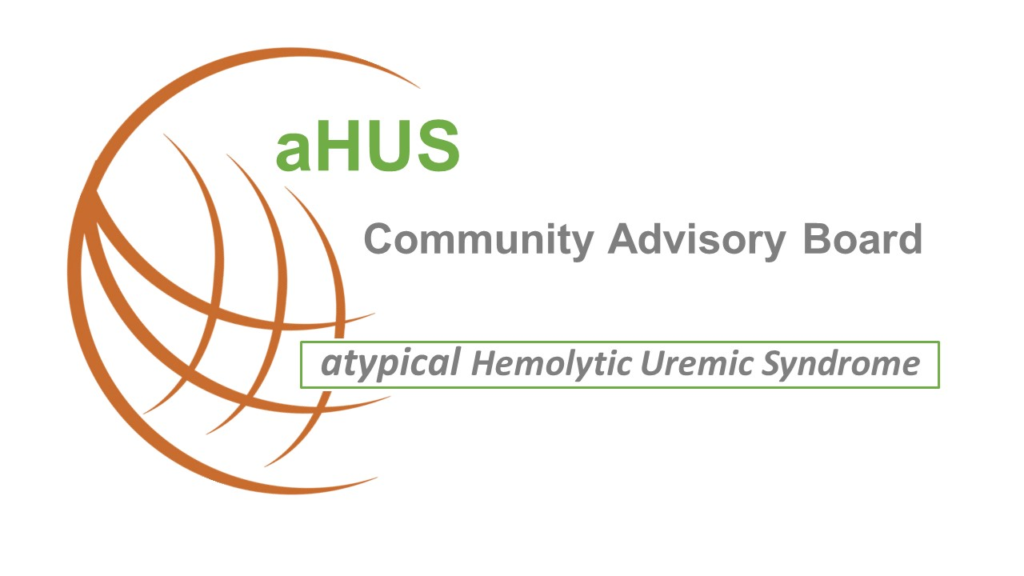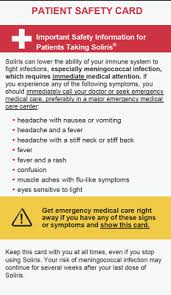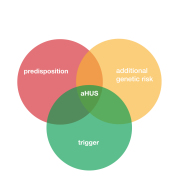Today it can be announced that a Global aHUS Community Advisory Board (CAB) has been formed.
What is a Community Advisory Board, or CAB ?
Well, it is a formal organisation to represent the views of the aHUS patient community throughout the world and to give them a voice which global Pharma and international research networks can listen to.
Why form such a Board?
Increasingly, patient centricity is becoming a driver of research and technology developments. Also, in the 2020s more Pharma are developing solutions for treating Complement conditions such as aHUS. Most are just starting out on the journey and so have an opportunity to include patients’ concerns and matters of importance to them in their plans. A Community Advisory Board or CAB can be a focal point to express those concerns and say what matters. By patients for patients.
How can a CAB do that?
Well first of all it can be multinational. It can include those who are patients or caregivers, who have experience of patient advocacy and who can bring skills and knowledge to both question Pharma and answer their questions. Giving a much broader perspective about living with aHUS.
How was the CAB formed?
Not overnight that is for sure. Although some thought had been given to it for some time before ( see HERE) , work began in earnest about eighteen months ago. It started after an unsuccessful attempt was made to bring together patients from around the world to engage with a new Pharmaceutical company interested in aHUS. This was not the first attempt at doing it, as there had been others before. But this time there was a determination, given the emerging opportunities that the 2020s were bringing to patients everywhere, to have a “professional” patient solution for Pharma engagement.
Sounds good but how was it done?
It had to be a global approach from the outset not just one country. So, representatives were sought from global and internationally known aHUS organisations, including the aHUS alliance, aHUS Rest of the World, Global aHUS Families Group, The aHUS Foundation and aHUS alliance Global Action and some well-known “independent” advocates. The idea then was to form some sort of “global panel of experts”. The group, we did not have a name, set about doing that. Eventually over 20 aHUS people were included in the dialogue. The group ultimately became known as The Global aHUS Partnership. Meetings were held by Zoom.
And a CAB?
A model for Pharma engagement was brought to our attention. It was something that the European rare disease organisation EURORDIS had developed ( more info HERE) . It was called a COMMUNITY ADVISORY BOARD. It was to be a formal, structured and well-educated group which could be recognised as a disease expert group by Pharma everywhere. It was what we were already trying to create and the Partnership agreed we should switch to creating a CAB using that model. So, we began creating an advisory board for the global aHUS community.
What was different about it?
Firstly, Pharma were aware of the EURORDIS model so we could talk about with them without much explanation of what we are. It also had some established formalities, including defining the purpose and way of operating, which we could adopt. These included a formal application process for those in the Partnership to apply to become members. The Partnership having agreed both, the recruitment process began.
So, who were the Partners admitted to board membership?
The inaugural board membership is :
Anna Benson, New Zealand, Linda Burke, Dave Deffenbaugh, both USA, Margriet Eygenraam, Canada, Kerri Grey, Australia, Gulin Kayserili,Türkiye, Nihal Ibraham ,UAE, Pauline Kung and Tara Sam, both Hong Kong, Kamal Shah, India, Jeff Schmidt, USA and Len Woodward, UK.
Note Pen pictures of each Board Member of the CAB can be seen in the CAB portal of our home page.
OK, is that it done?
Reaching this point is really just the end of the beginning. CAB members take over what happens from now on from the Global aHUS Partnership.
So what’s next?
Well training of Board Members has begun. There will be a need for them to complete 7 training modules over the next 11 months. Board members will learn about clinical trials and ethics, the scope of drug regulatory bodies, health technology appraisals and more. It will be delivered by an organisation called EUPATI. The learning format is mixed between self-tuition using EUPATI materials and monthly web tutorials. Altogether a commitment of about 8 hours each month is expected.
The EUPATI representative Rob Camp will also handle the administration on behalf of the Board, including formal agreements with Pharma, and setting up the initial meetings with them for some time in the Autumn/Fall this year.
Each Pharma meeting could take one day and these can be hybrid attendance format, with some attendees present face to face while others are online. If two Pharma meetings are held side by side with traveling days members may have to be away for four days. But this may only be once or twice each year.
What will you talk about?
Agendas for each meeting will be jointly created between the CAB and Pharma. Topics will cross the whole spectrum of patient centricity issues. The Partnership decided a priority order for centricity issues and the top 3 chosen were :
Firstly, PATIENT SAFETY-reliable supply and effective patient safeguarding, followed by EQUITABLE ACCESS- effective policies for all patients ( regardless of location , disability or access to funding) and thirdly INVOLVEMENT in R&D -patients are engaged and their opinions sought in each stage of R&D.
So, the CAB will be wanting to know such things as what adverse events or side effects are reported by patients and what is being done about them? Would events like COVID impact on drug delivery and contingencies? What plans are being made to market treatments for as many patients as possible in different parts of the world? What compassionate use programmes are in place? What success may mean to patients when trialing potential treatments and how informed consent is sought? It will all depend on who the meeting is with.
How can others participate in the CAB in the future?
Each technology developed for aHUS starts with a trial, then approval, marketing, and long-term observation of 10 years or more. Members are expected to participate for 2 to 3 years. So new members will be needed. Notices of membership application to fill vacancies will be advertised from time to time. Anyone interested in becoming a CAB member can also register an interest with the CAB at any time. If you know a CAB member you can ask them for information about joining. Click HERE for details & the application form for CAB membership.
Who would qualify for membership?
CAB members have to have a connection to aHUS either as a patient, caregiver or an aHUS patient organisation representative . Evidence of business or language skills is important, particularly committee working experience or public speaking. Also, what motivates them to want to be a board member. They will also need to commit about 100 hours each year to CAB work and be able to travel internationally, or participate in virtual meetings on line
How will you know if the CAB is a success?
If it is sustainable for more than one meeting it would be an achievement compared with other attempts at patient engagement. But also, it will be about whether Pharma change something they planned to do with an improvement suggested by the CAB. Also will be providing an insight that was not on Pharma’s radar before consulting the CAB. Also, we intend to use a feedback questionnaire to be completed by Board Members, and include Pharma representatives too, to measure the value added from these engagements over time. Very important too will be the level of interest shown by the global community in what a CAB, in their name, is doing.
How can I keep track of the CAB’s activities?
The CAB will not have its own website but will rely on the social media platforms and channels of the partner organisations to report on its work. On this website a “portal” will be added to the home page where CAB news will be posted and a record of its activities kept, including notes of meetings held with Pharma.

Article No. 519


